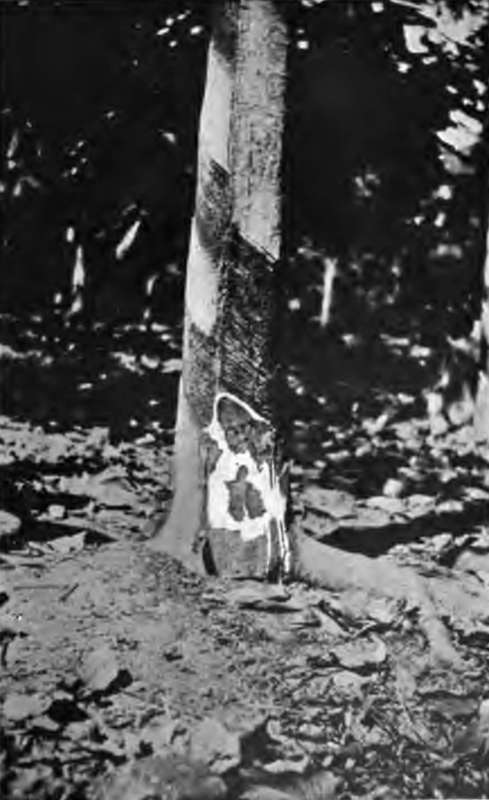Diseases Of The Stem Canker
Description
This section is from the book "Rubber And Rubber Planting", by R. H. Lock. Also available from Amazon: Rubber And Rubber Planting.
Diseases Of The Stem Canker
Three diseases of the stem are more or less prevalent in Hevea, whilst four others which at present appear to be of minor importance have been recorded from time to time.
Probably the most serious of the stem diseases is the so-called canker, which has recently been shown to be due to the attacks of the fungus Pkytophthora Faberi, and is therefore a near relative of the deadly potato disease Like the potato disease, the canker of rubber is disseminated by motile spores, which swim actively in the film of water which may cover the surface of the trunk in wet weather. The canker of rubber has been shown to be identical with that of cacao, and the same fungus attacks the fruits as well as the bark in both species. The term canker is a singularly unsuitable one for this disease, which gives rise to no roughness or eruptive outgrowth such as is usually associated with the name of canker. The disease consists in a softening and rotting of the inner layers of bark, which may be scarcely visible from the exterior, or may betray its presence by the oozing out of a dark red liquid. The softened and discoloured area is occupied by the hyphae of the destructive fungus. The rotting bark may soon become the breeding ground for other fungi, but the Phytaphthara is the primary cause of the mischief. On shaving off the outer layers of bark with a sharp knife, the diseased area becomes recognisable as a brownish or claret coloured patch, with well defined edges separating it from the surrounding healthy bark.
The only remedy is excision. If the disease is discovered whilst the patch is still small, the whole of the diseased tissue can be cut away. The healthy bark should be trimmed all round the exposed area of wood with a very clean cut, and if much wood is exposed the latter should be tarred. In the course of time the bark will heal over the wounded area and the tree will recover. The disease is specially serious, owing to the fact that it generally attacks the lower part of the trunk where tapping is in progress. Tapping must therefore be suspended until the recovery of the tree is well advanced. In cases where the disease has already spread far round the circumference, it is better to cut down the tree at once. Any diseased portions cut away, and, in the case of felling, the whole tree, should always be destroyed by fire.
Plate IX

Canker of Hevea Bark
The same fungus attacks the fruits of Hevea, especially in wet seasons. The pods turn black and sodden, and rot upon the trees. Beyond the loss of the seed crop, little harm appears to be done directly to the trees, but the diseased pods serve as centres of infection, and thus increase the chance of the disease developing upon the bark. The only possible treatment is to collect and burn the diseased fruits.
The spread of canker is greatly facilitated by the shade consequent upon close planting. In districts where the disease is prevalent it is therefore desirable that the trees should be widely spaced. Where they are already closely planted, the question of thinning out becomes a serious one, but if it is decided to fell a certain proportion of the trees, the stumps and larger roots should also be extracted in order to avoid danger from root disease. It is understood that experiments are being tried in Ceylon to find out whether the tapping area can be sprayed with some substance which will prevent the germination of the fungus spores, whilst not injuring the quality of the rubber prepared from the latex. Such spraying is not likely to be of much use so long as rain water is allowed to flow over the surface of the tree, whilst, if the trunk can be kept dry, the germination of spores will probably be checked as effectively as by a fungicide. The provision of rain guttering above the tapping area seems therefore to be a most desirable measure in all districts where rubber canker is prevalent.
Continue to:
- prev: Hymenochaete Noxia
- Table of Contents
- next: Pink Disease
